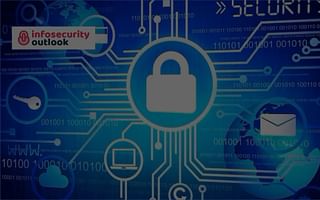Maya Braun is a seasoned expert in the realm of cryptography, driven by a profound interest in data privacy. Her professional journey has been dedicated to the design and development of secure communication systems, while also being a vocal advocate for digital rights. Maya takes pleasure in penning down her thoughts on the latest breakthroughs in cryptography and their potential impacts on privacy.
Hey there! Thanks for reaching out to HackerDesk with your question. I'm Iris Crypt, and I'm here to help you understand the fascinating world of network security.
When it comes to network security, there are countless examples that illustrate its importance in safeguarding our digital world. Let me give you a concrete example to help you grasp the concept.
Imagine you're working in a large organization where employees have access to sensitive information stored on the company's internal network. To ensure the security of this network, the organization has implemented various measures.
Common Network Security Measures in Large Organizations
| Security Measure | Purpose | Implementation | Effectiveness |
|---|---|---|---|
| Firewalls | To block unauthorized access to the network | Installed at the network's edge, filtering incoming and outgoing traffic | High |
| Intrusion Detection Systems (IDS) | To detect malicious activities or policy violations | Deployed within the network to monitor traffic | Moderate to High |
| Antivirus Software | To protect against malware and viruses | Installed on all devices connected to the network | High |
| Virtual Private Networks (VPN) | To secure remote access | Used by employees working remotely to access the network securely | High |
| Two-Factor Authentication (2FA) | To verify the identity of users | Implemented at the login stage for all users | High |
| Regular Software Updates | To fix security vulnerabilities | Automated updates for all software used within the network | Moderate to High |
| Employee Training | To prevent human errors leading to security breaches | Regular training sessions on cybersecurity best practices | Moderate, depends on the effectiveness of the training |
One example of network security in this scenario is the use of firewalls. A firewall acts as a barrier between the internal network and the external world, monitoring and controlling incoming and outgoing network traffic. It examines each packet of data and decides whether to allow or block it based on predefined security rules. By doing so, firewalls help prevent unauthorized access to the network and protect against malicious attacks.
Another example is the implementation of virtual private networks (VPNs). A VPN creates a secure, encrypted connection between a user's device and the company's network. This ensures that sensitive data transmitted between the user and the network remains confidential and protected from eavesdropping or interception by unauthorized individuals.
Network intrusion detection systems (NIDS) are yet another example of network security. NIDS monitor network traffic in real-time, analyzing it for suspicious patterns or known attack signatures. If a potential threat is detected, the NIDS can trigger an alert, allowing security personnel to investigate and respond promptly.
Additionally, network security often involves the use of strong authentication mechanisms, such as multi-factor authentication (MFA). MFA requires users to provide multiple forms of identification, such as a password, a fingerprint, or a security token, to gain access to the network. This adds an extra layer of protection, making it more difficult for attackers to impersonate legitimate users and gain unauthorized access.
These are just a few examples of network security measures that organizations employ to protect their networks and the valuable data they contain. It's important to note that network security is an ongoing process that requires regular updates, monitoring, and adaptation to emerging threats.
Remember, in today's digital world, network security is crucial to safeguarding sensitive information and ensuring the integrity and availability of networks. By implementing robust network security measures, organizations can minimize the risk of data breaches, unauthorized access, and other cyber threats.
I hope this example has shed some light on the importance of network security. If you have any more questions or need further clarification, feel free to ask. Stay tuned to HackerDesk for more cybersecurity updates and tips to keep you secure in the digital world!















